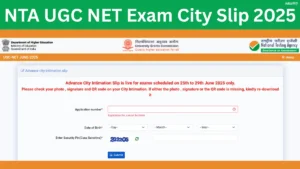Table of Contents
The UGC NET exam, conducted by the National Testing Agency (NTA), serves two primary purposes for higher education aspirants: qualifying candidates as Assistant Professors through the National Eligibility Test (NET) and awarding Junior Research Fellowships (JRF) for PhD research. While both pathways are assessed through the same examination, they differ significantly in their objectives and benefits. Understanding these key differences between UGC NET and JRF is crucial for candidates to make informed decisions about their academic and professional trajectories in higher education.
What is UGC?
University Grants Commission National Eligibility Test (UGC NET) is a national-level exam conducted to determine the qualified candidates for Assistant Professor or both Junior Research Fellowship (JRF) and Assistant Professor posts in Indian universities and colleges. National Testing Agency (NTA) has going to conduct the UGC NET exam.
UGC NET Vs JRF: Overview
UGC NET & JRF Exam is the same exam conducted by NTA. The only difference is that you need more marks to clear the JRF Cut Off Marks as compared to NET. UGC NET December 2025 Cycle has been available on the official website. The details have been mentioned in the below table.
| S.No. | Particulars | Details |
| 1. | Tenure of JRF | 3 years |
| 3. | Eligibility |
|
Difference Between NET and JRF
UGC NET and JRF are one of the most popular exams started by the University Grants Commission (UGC). UGC NET & JRF exam is now conducted by NTA (National Testing Agency) twice a year, i.e., during the months of June and December/January. If you qualify for the NET Exam then you are eligible for Assistant Professor or both Junior Research Fellowship (JRF) and Assistant Professor posts in Indian universities and colleges.
NTA NET is an eligibility test for Assistant Professor positions, while JRF is a competitive fellowship program awarded to successful NET qualifiers to support their research pursuits. While UGC Exam is focused on eligibility for teaching positions, JRF provides a platform for candidates to pursue research and contribute to their respective fields.
| UGC NET Vs JRF | |
| UGC NET(National Eligibility Test) | JRF(Junior Research Fellowship) |
| UGC NET stands for National Eligibility Test and is conducted by the National Testing Agency (NTA). | JRF – Junior Research Fellowship is a prestigious fellowship program administered by the University Grants Commission (UGC). |
| It is a national-level eligibility test to determine the eligibility of candidates for the role of Assistant Professor in Indian universities and colleges. | It is awarded to candidates who qualify in the UGC NET exam and demonstrate exceptional research potential. |
| UGC NET assesses candidates’ knowledge and understanding in various subjects across disciplines. | JRF provides financial support to selected candidates to pursue research in their chosen field. |
| Qualifying UGC NET allows candidates to apply for Assistant Professor positions in institutions across India. | JRF recipients are expected to engage in research activities, publish papers, and contribute to the advancement of knowledge. |
| UGC NET does not automatically grant the Junior Research Fellowship (JRF). | JRF holders are also eligible for lectureship positions in universities and colleges across India. |
UGC NET & JRF Cut Off Marks
To be considered for the award of JRF and/or eligibility for Assistant Professor, candidates need to score the minimum marks as discussed below.
| Category | Minimum Marks (%) to be obtained | |
|---|---|---|
| Paper-I | Paper-II | |
| General | 40% aggregate marks in both the papers taken together | |
| OBC-NCL/PwD/SC/ST | 35% aggregate marks in both the papers taken together | |
- All candidates (who had applied for both Assistant Professor and JRF) out of the total number of qualified candidates derived in Step IV, shall be considered for JRF
- A total number of slots available for awarding JRF is allocated among different categories as per the reservation policy of the Government of India. The procedure for subject-wise cum category-wise allocation of JRF slots is mentioned below:
| Example | Description |
| Number of candidates to be declared qualified for JRF & Eligibility for Assistant Professor Both in the subject ‘Economics’ for the Scheduled Tribe (ST) category | Number of candidates belonging to the ST category who have opted for JRF and have qualified for Eligibility for Assistant Professor Both in the subject ‘Economics’ (x) Total JRF slots available for ST category (÷) Total number of candidates belonging to ST category overall subjects who have opted for JRF and have qualified for Eligibility for Assistant Professor |
The aggregate percentage secured by candidates in both papers corresponding to the number of JRF slots shall determine the qualifying cut-off for JRF in Economics for the ST category. Similarly, cutoffs shall be decided for all subjects and categories.




 REET Mains परीक्षा के ...
REET Mains परीक्षा के ...
 UGC NET Exam City Intimation Slip 2025 O...
UGC NET Exam City Intimation Slip 2025 O...
 How can I Prepare for UGC NET Exam onlin...
How can I Prepare for UGC NET Exam onlin...












